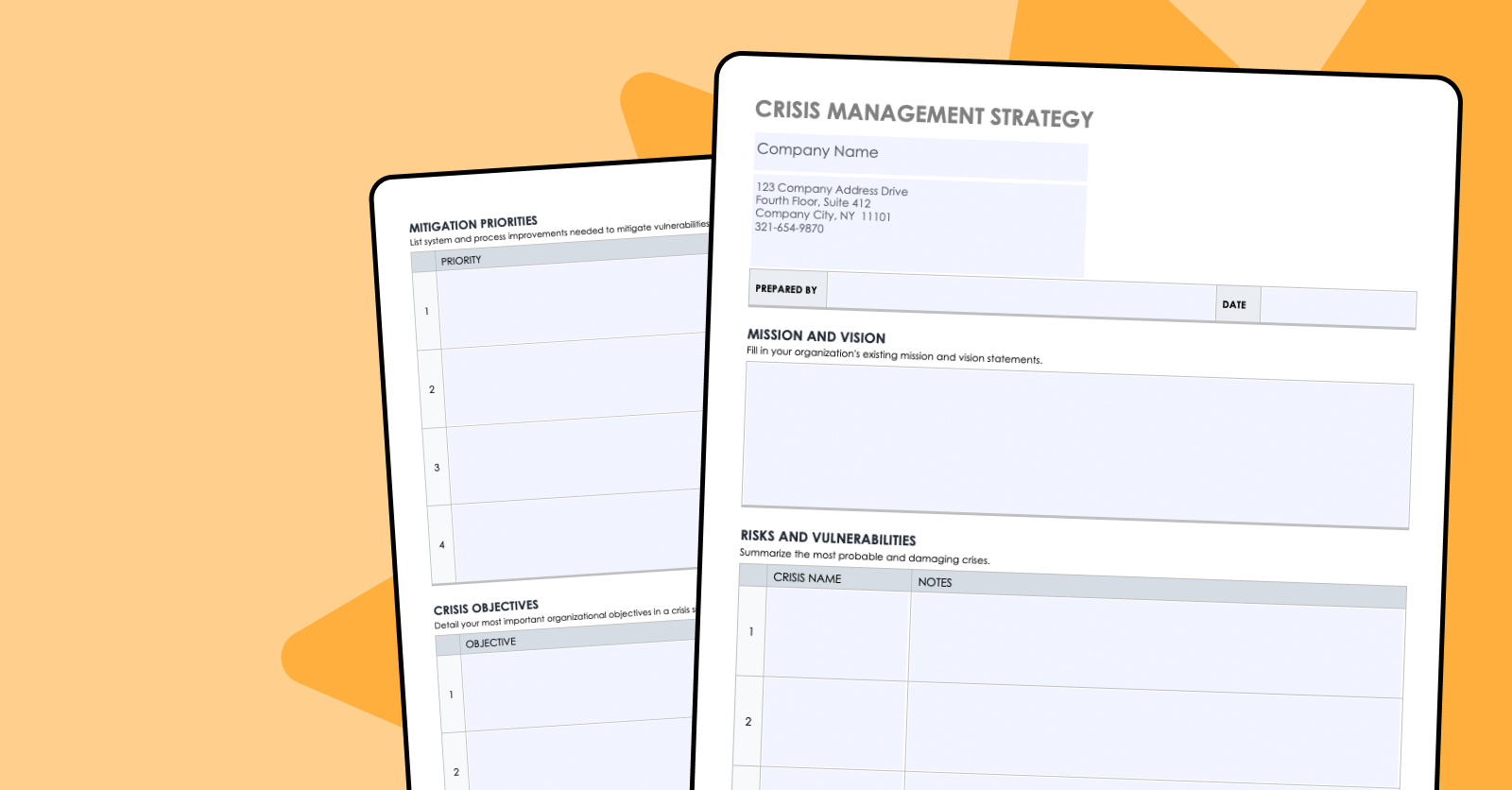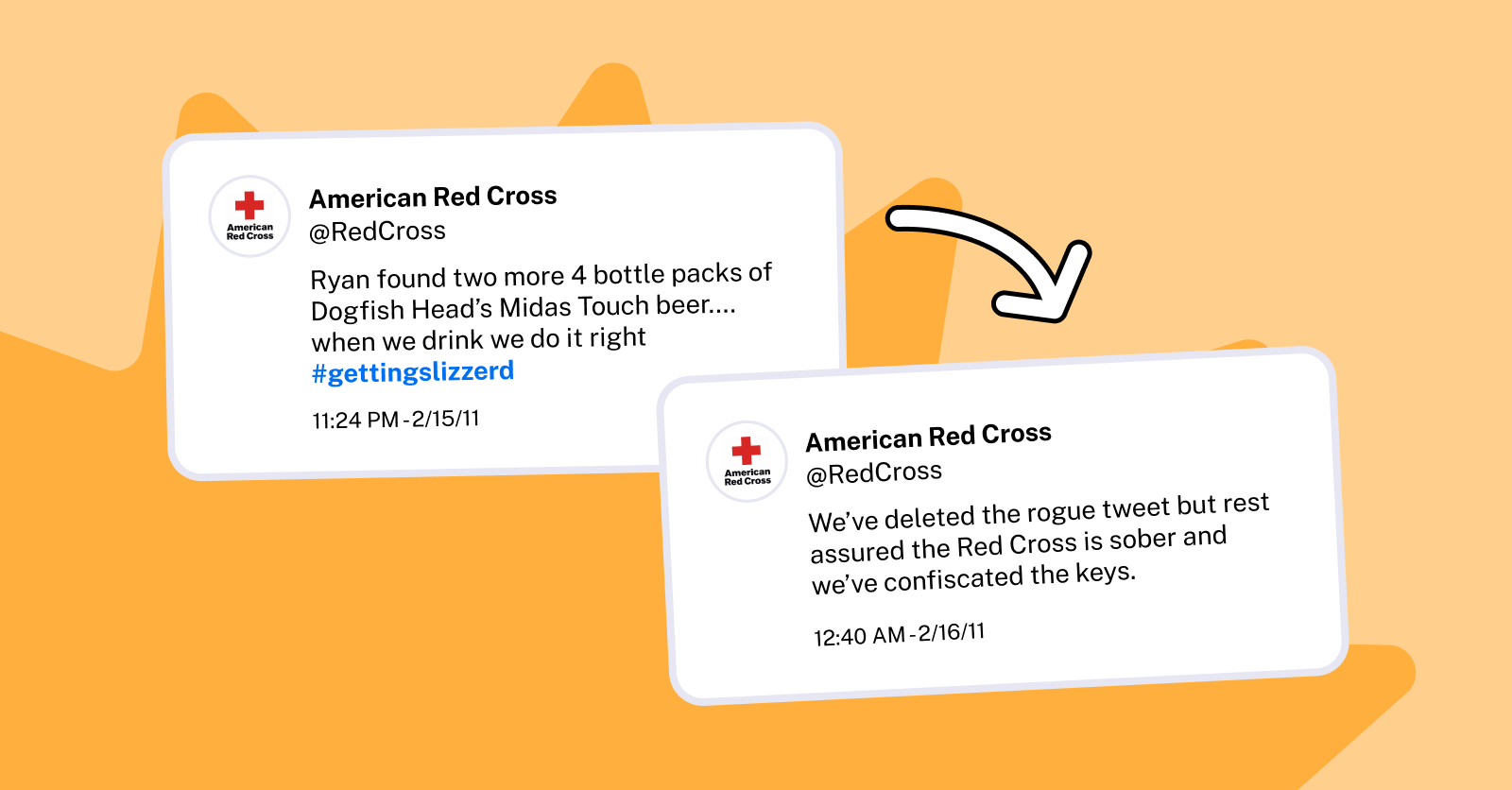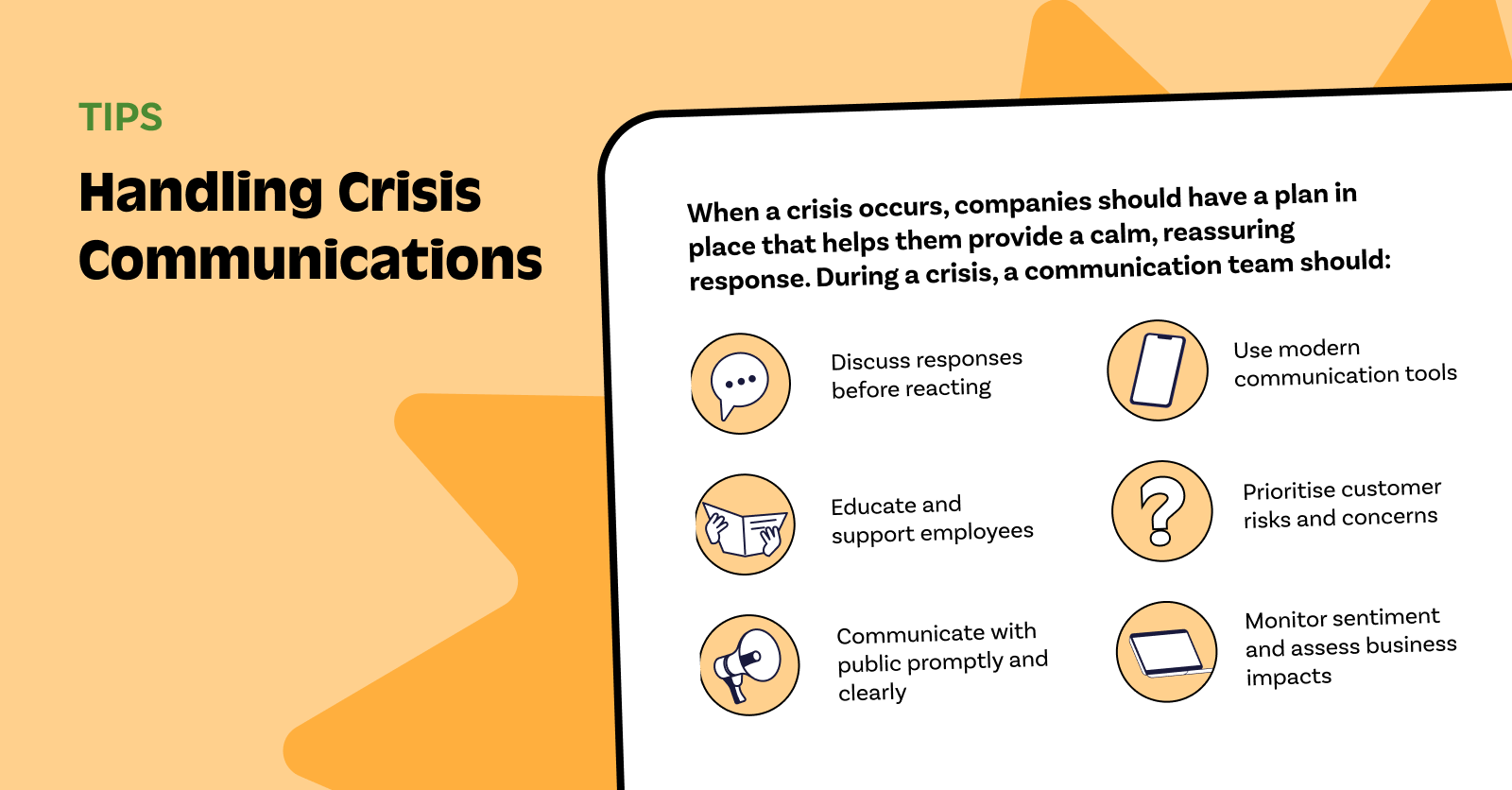
Public relations is an essential aspect of any business or organisation. However, in the case of a non-profit, reputation management is paramount.
Non-profit organisations rely on the public for support. So maintaining good public relations is a critical part of any non-profit marketing plan.
Unfortunately, even the most well-run organisation can have a public relations crisis. It could be anything from bad online reviews to an executive scandal. But, in the social media age, even a minor issue can lead to massive negative publicity if not managed.
With that in mind, let's go through six PR crisis management tips for your non-profit.
1. Have A Response Team in Place
Time is of the essence when it comes to PR crisis management. So having a dedicated response team in place helps avoid wasting time putting the right people together in the aftermath of a disaster.
With a response team at the ready, you can be more proactive. This gives you a better chance of defusing a situation before it becomes a crisis.
You can assemble a team from your PR staff. But there are also B2B PR agencies available if you wish to retain public relations professionals and have them on standby for when they’ll be needed.
Your PR team should always be monitoring any PR problems that could arise. That way, they can spring the response team into action as soon as possible.
2. Prepare A Crisis Strategy
It is vital to prepare in advance with a solid crisis management strategy in place. A crisis strategy is not a plan for a specific PR disaster. It is a framework to guide an organisation's actions and decision-making when faced with a crisis.
The images below show an excellent example of a crisis management strategy template. Using a template like this helps you build an effective crisis management strategy. It also speeds up the process.

Establishing clear crisis objectives, key performance indicators, and strategic actions is essential. These factors can save you a lot of time when a crisis occurs, so use them to help create a plan for the specific issue at hand.
It is important to note that each situation requires a specific approach. So, make sure to use your strategy as a guide, not a one size fits all solution. Then use the crisis management strategy to help you create a crisis plan for the current PR disaster.
It’s also worth noting that you may need to train your employees on how to handle a crisis. This is vital in improving your crisis response. It can even prevent future crises from escalating due to employee mishaps.
For example, training your employees how to respond when questioned by the media or their friends during a crisis will save them from saying things that could go against your crisis response strategy.
Therefore, create an online course or prepare in-person training with public relations professionals to equip your employees with basic PR response skills.
3. Craft Your PR Message
Once you've established a strategy, you can start to craft your PR campaign message. The strategy gives you an idea of the key message you want to provide to the public. Now you must put that idea into action and craft a response that gives the right impression.
Crisis experts say it is best to be as transparent as possible. As the CEO, it’s ideal for the message to come from you. More importantly, you must own up to any mistakes made by your organisation, apologise, and accept responsibility. You should also make it clear that this mistake won't happen again. Or, in the case of an ongoing problem, detail what is being done to solve the issue.
In certain situations, you can use humour to take the sting out of a PR mishap. For instance, in 2011, the American Red Cross handled a potential PR disaster with humour. A member posted an inappropriate tweet on the organisation's account by accident, as shown below:

First, they deleted the original tweet. Then they tweeted again, joking that they would confiscate the worker's keys. This is an excellent example of how to defuse a situation with humour, where appropriate.
Also, avoid referencing the actions of external parties. Even if external parties are partly responsible for a PR disaster, blaming others is a bad idea. The public will see this as a deflection tactic. So focus on taking responsibility for your organisation’s actions.
Finally, don't overdo it with long sentences or flowery language. This leaves more room for misinterpretation, leading to further PR problems. So get straight to the point and be very clear in your message.
4. Address Your Stakeholders
Next, you must inform all stakeholders of your plan and release your PR message to the public.
First, inform all affected parties within the organisation. This includes employees, key executives, management, and owners. Your social media team, in particular, must be aware of the situation and how you are approaching it.
It is vital to keep all communication channels open. So you must have an effective crisis communications plan to keep everybody informed. The infographic below provides a good set of core principles to follow in this regard.

External communication tools are also critical. Give your partners and sponsors a heads-up before releasing a statement. A PR crisis can harm other organisations that associate with your non-profit.
Finally, release your PR message to the public. Non-profit organisations rely on public donors. So you must address the public and set the record straight if you want to retain your donors. Try to release your message as soon as possible; the sooner the public hears from you, the better.
Also, use friendly press contacts to your advantage. They are likely to be less damning in their analysis of the situation. You could give them early access to your statement to try and build a favourable angle in the news.
If a particular customer is affected by the incident, you should contact them. Communicating with those most affected by the incident is critical. Assure them that you will take care of the situation and that it will not happen again.
5. Monitor the Situation
A PR crisis usually rumbles on for days or weeks after the initial incident. Increased scrutiny and media attention in the aftermath can also create further issues. So, as the situation evolves, you must track everything.
First of all, monitor the reaction to your PR message. A negative reaction can escalate the situation and create more problems. So, make sure to check the reaction and adapt your message and strategy if needed. Analyse any news stories or articles written about the crisis to gauge the reaction in the media.
You should also watch out for negative posts on social media regarding the situation. A negative comment made on social media can lead to further issues.
Any public complaints must be taken seriously as they can encourage other customers to share their bad experiences. If not dealt with efficiently, a negative social post could develop into a bigger problem.
You can also leverage social listening and crisis management tools like Sprout Social, MediatoolKit, and Brand24 to help you in this regard. The tools are supposed to help you with social media monitoring. This is because the majority of online conversations take place on social platforms.
General sentiment monitoring across the internet is also very useful. This can help you gauge the public and media's reaction.
A good crisis management tool should be able to do more than track what is being said online. Look for tools with automation features, engagement capability, and real-time alerting. Features like these that automate the process can save valuable time. They may also be critical for alerting you of potential issues before they become full-blown PR crises.
6. Post-Crisis Analysis
It may be tempting to discard the situation once a PR disaster has blown over. However, post-crisis communication and analysis are critical.
There is great value in analysing a PR disaster from start to finish. Every PR crisis provides an opportunity to learn, so always conduct post-crisis analysis.
The best way to manage PR crises is to prevent them from happening in the first place. So, you should examine how the crisis first came about. That way, you can learn how to avoid similar incidents in the future.
Despite this, no matter how well-prepared you are, a crisis situation can always occur. With that in mind, analyse how your response team dealt with the issue. Identify aspects that worked well and emphasise their importance for the future while working on areas that need improvement. Remember, small tweaks to your strategy can make a significant difference in the future.
Perhaps the only positive of a PR crisis is that it can prepare you for the future. So, make sure to take advantage of this with a thorough after-crisis analysis.
A PR crisis can happen to even the most well-run non-profit organisation. To prevent this from happening, you must prepare in advance with a dedicated response team. Building effective crisis management plans is also vital.
You can't use the same plan for every PR disaster. You must alter your PR message to address and defuse the crisis at hand. Also, keep your stakeholders informed throughout the process. Track the situation as it develops and be ready to adapt. Finally, use post-crisis analysis to prepare for future PR disasters.
Follow these simple PR crisis management tips, and you'll be ready for any problems that come your way.
Ready to create your
next campaign?

Founder of Crisis Management Agency Prohibition, former University lecturer, author of “Share This Too” and his blog which is listed in the UK's top 10 PR + social media marketing blogs.




